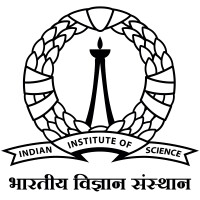Jaypal Inaniyan Review of IISc, Bangalore
The Indian Institute of Science (IISc) was conceiv...
The Indian Institute of Science (IISc) was conceived as a 'Research Institute' or 'University of Research' by Jamsetji Nusserwanji Tata, in the twilight years of the 19th century. A long period of almost thirteen years was to elapse from the initial conception in 1896 to the birth of the Institute on May 27, 1909. The early history of the Institute is a fascinating chapter in the story of higher education and scientific research in India. The cast of characters in the drama that led to the establishment of the Institute includes, in addition to its charismatic and generous founder J.N. Tata, figures from the pages of Indian history. There is Swami Vivekananda, whom J.N. Tata befriended on his famous voyage to the United States, the Maharaja of Mysore, Shri Krishnaraja Wodeyar IV and his mother then acting on his behalf, and Lord Curzon the Viceroy of India, whose first task on arrival on December 31, 1898 was to receive a draft proposal prepared by the Provisional Committee set up to plan the establishment of the Institute.
The plan was shepherded through many difficult years by Burjorji Padshah, a close associate of J.N. Tata. Unfortunately, J.N. Tata died in 1904 unaware that his vision would indeed be realized a few years later. When the British Government finally issued the Vesting Order in 1909, an unmatched experiment in higher education and research was launched in India. IISc is truly the first example of a public-private partnership in this country; an institution, whose evolution over a century is testimony to the robustness of its foundations. The Institute occupies nearly 400 acres of prime land in Bangalore, generously donated bythe Maharaja of Mysore in March 1907. Indeed, the contribution from the princely state of Mysore was the decisive element in determining the location of J.N. Tata's proposed institution. Remarkably, in a gesture unmatched in the annals of private philanthropy in India, Tata did not wish his name to be associated with the Institute. His dream was to create an institution that would contribute to the development of India. The name, Indian Institute of Science, which was finally chosen, reflects in every way the wishes of J.N. Tata. Visitors to Bangalore who seek out IISc still have to ask local residents for directions to the 'Tata Institute', a clear recognition that Jamsetji Tata's act of generosity has remained undimmed in public memory, despite the passage of a century.
The Institute began with only two departments: General and Applied Chemistry and Electro-Technology. The first Director, Morris W Travers began the task of organizing the Institute shortly after his arrival in India at the end of 1906. Travers began the construction of the main building, which is one of Bangalore's landmarks today. The Departments of Organic Chemistry and Biochemistry together with the Library were among the earliest to be established. The Physics department came into being in 1933, when C.V. Raman became the first Indian Director of the Institute. In the century that has passed since its inception, IISc has grown to become India's premier centre for research and postgraduate education in science and engineering. The evolution of the Institute over the past one hundred years has mirrored the development of science and technology in India. A long history, a strong tradition of academic research and an ambience that favours scholarly activity have been important elements in making the Institute a most attractive place for students and faculty.

Comments: